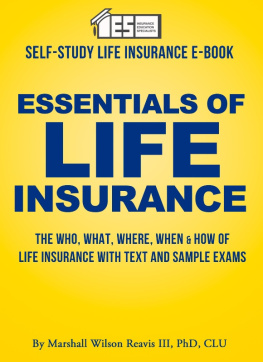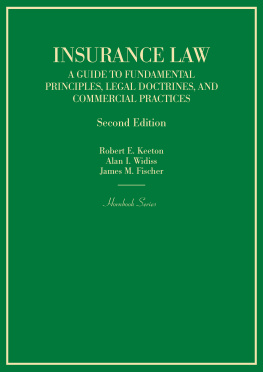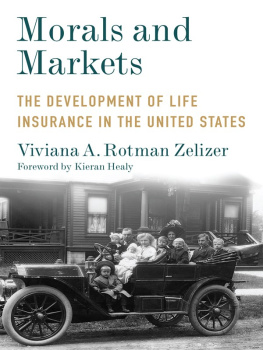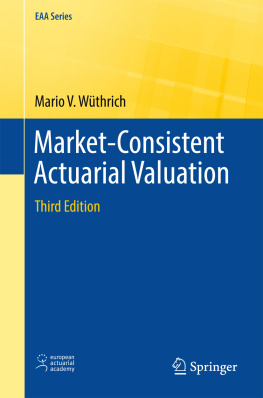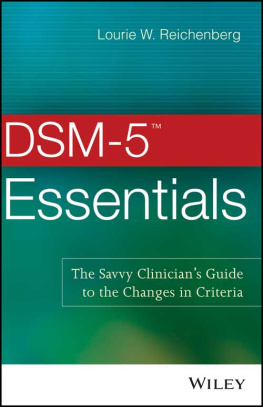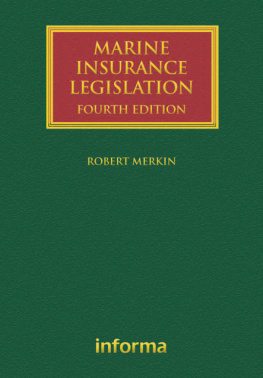Insurance Education Specialists
Lake Bluff, Illinois 60044
Copyright 2013 - Insurance Education Specialists
Published by:
BookBullet.com
1300 W Belmont Ave Ste 20G
Chicago, IL 60657-3200
ISBN: 978-1619843-48-6
All rights reserved. No part of this book maybe reproduced or transmitted in any form or by any means, electronic or mechanical, including photocopying, recording, or any information storage and retrieval system, without written permission from the publisher.
INTRODUCTION
TO LIFE INSURANCE
You are about to undertake the study of life insurance which is one of the four lines of insurance. The others are Property, Casualty and Health insurance. The insurance industry is very broad and encompasses a variety of jobs with a major one being the insurance producer.
As an insurance producer you will have the opportunity to meet with individuals, families and business organization to help them fmd ways to protect their fortunes in the event of the untimely and unexpected death of a wage earner or key employee.
Insurance can be defined as a social device where the losses of a few are paid by the premiums of many. The chance of loss occurring is called risk. In the insurance field risk is the raw material. If there were no risk of loss there would be no need for insurance.
An insurance company uses historical data to determine the rates and premiums that are charged for its various products. One mathematical tool that is used is the "law of large numbers" which says that the larger the group involved the more predicable the result. It is this tool that gives us the probability of a loss occurring.
In life insurance there are mortality tables which have been developed to provide the insurance companies with information on the life expectancy of men and women at different ages.
Types of risk - There are two types of risk, one is insurable and the other is not. Pure risk involves those situations where there is a chance of loss but no chance of gain. When an individual suffers a premature death there is loss of earnings and companionship which is replaced by the benefits paid under the policy. There is no gain from this death. These tables are used in the development of rates and premiums for life insurance policies.
The other type of risk, speculative risk, involves the chance of loss and the chance of gain. This is the entrepreneurial risk of business. The product may sell and the firm profit. However, the product may not sell and the firm go under.
Pure risks are insurable. Speculative risk are not insurable.
Managing risk. - There is a formal decision making process which an individual or organization can use to manage the pure risks that are faced in everyday life. This risk management process involves the following.
Avoidance - Risks can be avoided by never having or getting rid of them. As an example, it is risky to pars-sail. So if one never para-sails or discontinues the sport then the risk of loss from para-sailing is avoided.
Control - Risks can be controlled by being aware of various ways to either prevent loss (before it occurs) or reduce loss (after it occurs). For example, good eating habits can prevent illness. And, having an annual physical is one way to reduce the chance of loss from a health condition.
Retention. - When developing a risk management program it may be determined that many small and infrequent losses can be retained. That is, an individual can pay for those losses rather than fully insure them. These retentions are called deductibles or copayments and are common in health insurance.
Transfer - For many people the risk management technique that is most satisfactory is to transfer the risk of fmancial loss to another party, an insurance company. The purchase of a life insurance policy allows an individual to transfer the loss of income caused by a premature death to a life insurance company.
Requirements for an insurable risk. - Not everything is insurable. The chance of loss may be too great or the value of the item too small. As a general rule the following are the requirements for an insurable risk.
Large number of homogeneous exposures. - This means that in order for the law of large numbers to work properly there must be a large group of similar objects that are to be insured. This is not difficult in life insurance as there are many individuals in various age groups.
The loss must be fortuitous (accidental in nature). - That is, losses must be unforeseen and unexpected. An intentional loss would not be insurable. In the case of life insurance death is certain for everyone but it is unexpected for any single individual.
Losses must be fixed in time and space. - For all types of insurance policies it is important that the time and place of the loss be determined in order to know if the policy provides coverage. As an example, coverage under a policy could have expired before the loss occurred.
Loss must be measurable in dollars and cents. Losses vary as to their frequency and severity. If the amount of loss cannot be predicted, then how can rates and premiums be determined? In the case of life insurance the insured selects the amount of insurance for the policy. Rates and premiums are determined using the mortality tables.
Losses must be non-catastrophic. - This means that if a simultaneous loss occurred to a large group of homogeneous units an insurance company would be unable to bear the loss. This is why insurance companies are reluctant to insure homes that are located in areas that flood or where earthquakes can occur.
Requirements for insurable interest. - To have an insurable interest in some one or something an individual must be in the position of suffering a fmancial loss if that person were to die or that property be destroyed. This is an important legal concept that affects insurance policies.
In property and casualty insurance the insurable interest must exist both at the time the policy is written and at the time of loss. When a car is financed both the insured and the lender have an insurable interest. But after the loan is repaid only the insured has an insurable interest. If the car were to be destroyed the insurable interest would have to be determined before the loss could be paid.
In life insurance the insurable interest must exist only at the time the policy is issued. It need not exist at the time of loss. For example, when the policy is issued the spouse has an insurable interest in the insured. But following a divorce the insurable interest does not continue. However, if the spouse remains as the beneficiary of the policy the benefits could be paid to the spouse after the death of the insured even though no insurable interest existed.
Businesses often purchase life insurance on key personnel while they are employed and there is an insurable interest. If that person leaves the company and the policy is continued by that company they could collect the proceeds upon the death of the former key employee even though there was no longer an insurable interest .
The principle of indemnity. - The insurance contract is a policy of indemnity. This means that they are to reimburse the insured...make them whole again after a loss...but no more.
In property and casualty insurance there are provisions in the contracts that support the principle of indemnity so that the insured will not collect more than was lost.
In life insurance the principle of indemnity is less rigid because no one really knows the value of a human life. Is it $1.75 worth of chemicals? Is it $500,000 a year in sales to the employer? Is it "immeasurable" to a spouse?
As a result an individual can have as much life insurance as he or she can afford and insurance companies are willing to underwrite. The value of a policy is limited only as to the predetermined amount selected for that contract. It has little to do with the worth of the insured or his or her value to others.
Next page
